26 Incredible Plants You Can Easily Grow in Water
This post may contain affiliate links. If you make a purchase through one of my links, I may make a small profit at no expense to you. For further information, please view my policies.
Here are the best plants that grow in water if you want to ditch the soil!
If you’re a plant lover like me who has made too many mistakes killing precious greens due to overwatering, then why not consider growing plants directly *in* water instead?
Growing plants in water means no messy soil and not worrying about watering them every second day. You won’t need any fancy hydroponics systems with these plants, either! Plus, you won’t ever have to feel guilty about drowning them.
Does this sound good to you? If so, then let’s get started!
How to grow plants in water
It’s incredibly easy to grow plants in water. Just look at the simple steps below in order to get started straight away!
- The first step is to pick a plant you want to grow in water (see below for a comprehensive list of options).
- Then, take a cutting from an existing plant.
- Next, choose a vessel for your plant. It is a good idea to pick a glass vase with a thinner neck for the plant’s support, but any container will do.
- Place it in a room with bright, indirect light. A spot that’s slightly warm and with a temperature that does not change too often is perfect.
- Lastly, wait for your plant to grow!
How to transfer a plant cutting from water to soil

If you’re at a stage where you’ve already grown your plant in water and it has developed roots, then you may be wondering what comes next!
The first factor to consider when transferring your cuttings is the length of the roots.
I have tested various root lengths when transplanting and found that roots should be at least two inches long before transferring them to the soil.
- Prepare your pot and place some fresh soil in the bottom of the new pot.
- Remove your rooted cutting from the water, give it a quick rinse with fresh water, and place it in its new home.
- Cover it with soil, and water it thoroughly until water begins flowing through the drainage hole.
Best Plants to Grow in Water
Now, onto the best part; which plants can grow in water?
I have tried growing lots of different plants in water, and wanted to share my list of favorites with you!
Philodendron
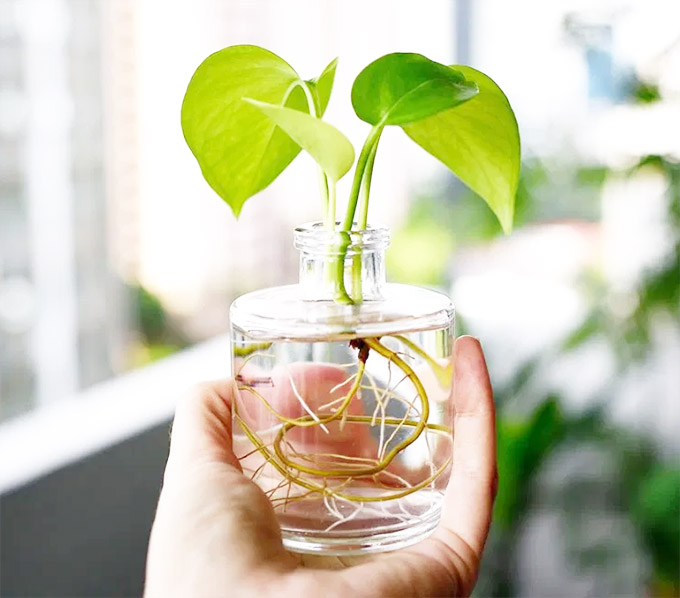
I love how low maintenance philodendrons are. They can tolerate bright and low light and grow quickly in a jar of tap water. I have had my heartleaf philodendron going on 15 years now, and have experimented growing cuttings in water before. It’s so easy!
The lush, trailing leaves of philodendron can give any room a more natural and inviting atmosphere. While you’ll usually see it grown in a pot of soil, it can also flourish beautifully in water.
Simply cut off about six inches from an existing plant to propagate your philodendron plant. Place the cutting in a clear jar or glass of water afterward. Wait for about ten days, and you’ll see roots starting to form.
If you need to purchase a baby heartleaf philodendron to get you started, you can pick one up on Amazon here.
Spider Plant
The name may sound a little scary, but trust me; spider plants do not have poison glands. 🕷️ It is named as such because of its “spiderettes” or the spider-like plants dangling down from its mother plant.
It is one of my personal favorites because it causes me less stress due to its highly adaptable nature. Because it can tolerate lots of abuse, it’s excellent for those who think they’re not blessed with a green thumb.
The spider plant is also one of the best plants for water propagation because of how easy it is to care for without soil. You can simply snip off its spiderettes and root them in water to make new ones.
To get started, purchase a baby spider plant on Amazon here.
Wandering Jew
If you’re looking to add some color to your garden but are allergic to pollen from flowers, then you won’t go wrong with wandering Jew. Its zebra-striped variety and bright purple leaves will add some life to your room.
Because it can adapt well to houseplant life, it can thrive in a room with moderate light. To grow this plant in water, start by cutting a wandering Jew stem. Any length should do but a cutting of six inches is easier to grow than a smaller one. Place the cutting in a jar of water. The leaves should be out of the water to avoid rotting.
I recommend that you use a clear jar or glass as it is always fascinating to see those tiny roots growing underwater.
To get started, purchase a live wandering jew plant on Amazon here.
Lucky Bamboo
Bring fortune and good luck in your home or office with this sturdy houseplant. Bamboo plants are popular in offices, homes, or even on desks. Large bamboo plants make fantastic privacy screens – we have one planted between us and our neighbor, but you can use faux potted bamboo plants for this purpose as well.
Lucky bamboo has a reputation for being virtually indestructible. Its tough stalks can survive in a vase full of water and a wide range of light conditions.
However, avoid direct sunlight as it can scorch the leaves. But when it begins to stretch, or you notice the green color is starting to fade, it’s best to provide more light on it.
To get started, purchase a live bamboo on Amazon here.
Peace Lily
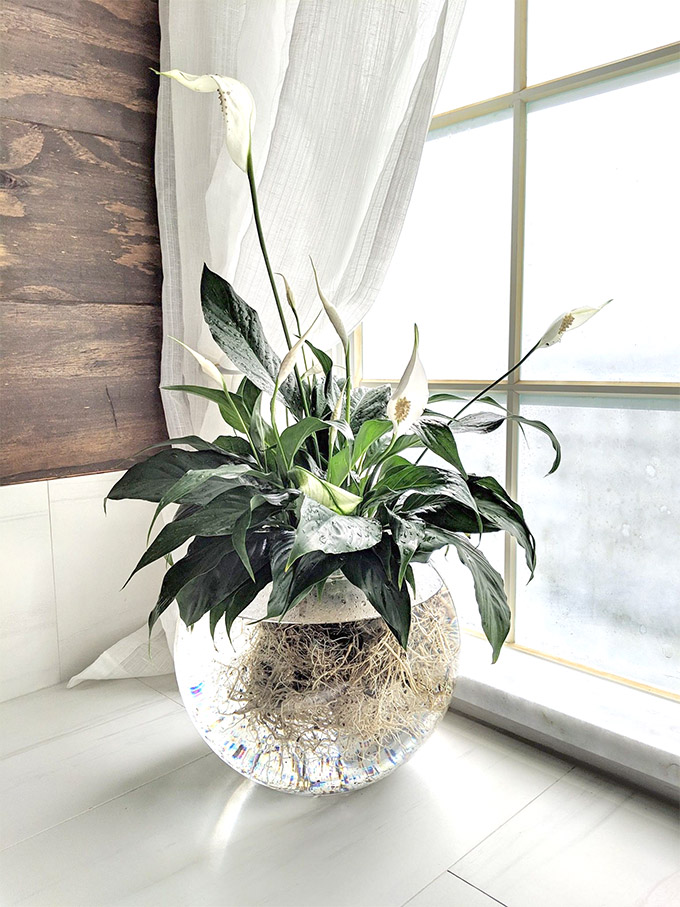
Beautiful and VERY easy to maintain, peace lily is also one of the best plants that grow in water without soil. It is a tropical plant that can make a gorgeous addition to your houseplant collection, especially when placed in an elegant glass vessel.
The plant’s base should be suspended above the waterline. You can use pebbles or glass stones to make sure that the roots of your peace lily are the only ones submerged underwater. You want to keep the leaves and its base from being wet constantly to avoid rotting.
To get started, purchase a live peace lily on Amazon here.
Fiddle Leaf Fig
Featuring large, violin-shaped leaves, the fiddle leaf fig is another incredible indoor plant. Since it commonly thrives in wet and warm conditions, growing this plant in water is super easy.
Just after four weeks of propagating in water, you’ll notice roots starting to appear on the cutting’s stem base. And then, after a couple more weeks, you’ll find roots growing in the water. In no time, you’ll have tons of fiddle leaf figs you can share with your friends or even sell for a good price.
If you haven’t had good luck with fiddle leaf figs (I know, they’re pretty finnicky plants!🤐) then you could always opt for faux instead – check out my favorite lifelike faux fiddle leaf figs right here!
To purchase a baby fiddle leaf fig to get started, check these ones out on Amazon right here.
Pothos (Devil’s Ivy)
Also known as Devil’s Ivy, Pothos is an incredible houseplant that can improve indoor air quality. It does this by removing carbon dioxide and other contaminants from the air around it and providing supplemental oxygen.
I know, it sounds really cool, right? And another impressive fact about it is its ability to withstand quite a bit of neglect.
However, growing pothos in water can be a bit tricky due to algae build-up, which is a natural result of water and sunlight. The good news is, though, that growing it from cuttings isn’t difficult. Plus, if you use a dark-colored container or vase to minimize sunlight, you can also reduce algae buildup. With enough care, you can prevent any issue and enjoy a healthy, luscious plant.
Buy Devil’s Ivy on Amazon here.
Chinese Evergreen
Have you ever been deceived by a plastic Chinese evergreen plant in stores or some people’s homes? I know I have.
That’s actually because a lot of fake houseplants are modeled after this plant. If you’re ready to grow your own Chinese evergreen, growing them in water is relatively easy.
Cut off a few inches of your Chinese evergreen plant and place the cutting in a vase filled with water. Make sure the cutting is long enough to have a couple of inches submerged underwater and some leaves above the water line.
Remember that growing the plant in water requires indirect sunlight. So it’s best to place the container on a window sill. Wait for several weeks and you’ll notice roots coming out of the submerged part of the stem.
Purchase a live baby chinese evergreen on Amazon today!
African Violet
Who wouldn’t adore the colorful blooms of African violets? Place them in clear, transparent vessels and put them throughout your house to enjoy their velvety textures and beautiful colors all year round.
Growing the plant in water from leaves is a great way to start new African violet plants. It is best to choose young, healthy leaves cut with about two inches of the stem. Keep the leaves dry, and after about a month, roots will begin to form on the stem.
You can buy assortments of African Violets on Amazon.
Baby’s Tears

This plant produces a myriad of tiny round leaves, creating a dense trailing mat. Baby’s tear is a low-growing plant, featuring a moss-like appearance with stems that can be quite fleshy.
Its spreading and creeping form works well when draped decoratively over the edge of a vase. Also, once you grow it in a jar of water where it does not have a lot of horizontal space, it will glow like a dense head of green hair.
You will need to change the water weekly, though. This is to remove the leaves that are floating in the water, which may begin to rot.
Purchase a small live baby’s tears plant on Amazon here.
Begonia

You only need a single leaf to grow begonia in water. It may take about a couple of months for roots to form, but once you start growing this plant, it is hard to stop.
This is all thanks to its visually appealing look and ornately shaped, show-stopper leaves. Plus, it is easy to maintain, which is no wonder it is one of many homeowners’ favorite indoor plants to have.
There are about 1,000 species of begonia, and their prominent features are their colorful leaves and flowers. The typical flower colors are white, yellow, red, and pink.
Check out the live begonias that Amazon has to offer in order to start propagating your own begonias!
Coleus
Although they love the heat, coleus plants can grow happily in just about any backyard, garden, or room. If you’re looking for flowers or some color during fall or winter, this plant is your versatile option.
This is why I love to have this plant in my house, as it never fails to add life to our living space. It is also one of the easiest plants to propagate and grow in water.
Take a six-inch plant cutting and place it in a vase filled with water. Ensure that there are at least two nodes submerged in water, and set the vase in a bright place but out of direct sunlight. If you don’t have a mother plant yet, you can buy Coleus seeds on Amazon and grow one first.
Best Vegetables to Grow in Water
Could gardening get any better when you have tons of indoor plants that grow in water? Actually, it can. Now, we will be looking at growing vegetables from scraps. It is super easy and will help you save time and money from continually going to the grocery store to buy fresh produce.
There are many vegetables that you can grow in water without much effort or the use of dirt. Some of the easiest are as follows:
Fennel

A flavorful culinary plant, fennel is a crunchy bulb that’s loaded with nutrients and health benefits. It is great for stocks, dressings, and salads.
Therefore, you might want to ensure that you always have a bulb of fennel at your disposal when in need of this vital ingredient.
Thankfully, growing this vegetable in water is super simple. Just cut the stalk down about one to two inches tall. Leave the roots intact, and place it in a shallow glass, jar, or bowl of water. Put it on a sunny windowsill, wait for it to grow, and your kitchen will never run out of fennel.
Green Onions
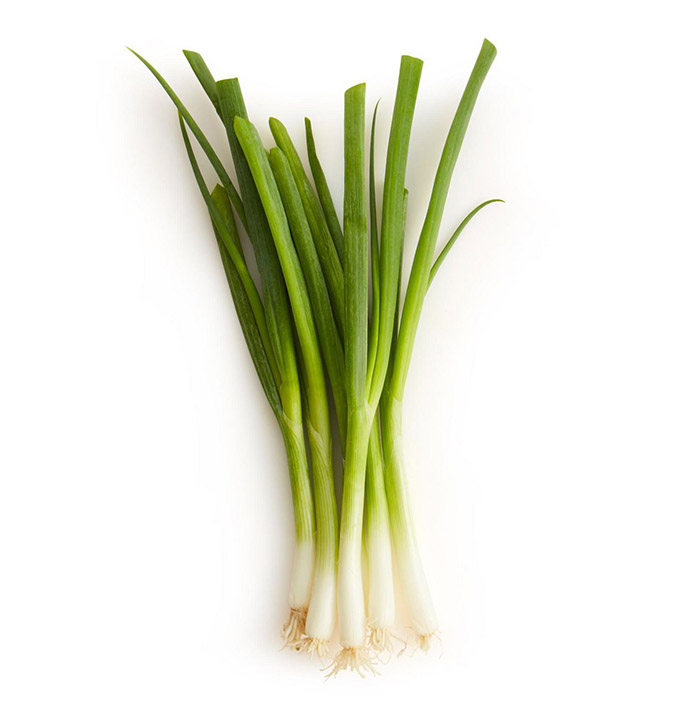
Green onions are long, tender green leaves native to central Asia. They are a great source of essential vitamins, iron, calcium, fiber, etc.
The entire plant is actually edible, from the green stalks to its white roots. But, you might want to keep the white part of the onion, including the roots. Grow the plant at home by placing it in a glass of water, and you will have a limitless supply of fresh green onions.
Lettuce

Although a common favorite for sandwiches and salads, lettuce is also used in wraps and soups. It is one of those staples that tend to get used in almost any kind of meal year-round.
Instead of tossing the unused parts in the bin, why don’t you regrow your favorite veggie instead?
Fortunately, growing vegetables from scraps is simple and straightforward. Keep about three inches of the bottom part of the lettuce. Place it in a shallow bowl of water, and wait until you notice small lettuce leaves regrowing in the center.
Leeks

Growing vegetables in water doesn’t have to be too complicated, especially if it’s leeks we’re talking about.
Just like onions and garlic, leeks belong to the Allium family. They have a sweet, mild flavor that’s perfect for stews, soups, and more. They are a healthy source of vitamins A, C, and K, fiber, iron, and manganese.
Chop off its green part and use whatever you would like, but don’t throw away the white bottom part. Leeks regrow just as easily as green onions when treated the same way.
Celery

I am not an excessively health-conscious person, but I’ve always liked to have the crunchy stalks of celery as a vegetable snack. That’s why knowing that I can easily regrow it with water is such a blessing.
I don’t toss out celery scraps but use them to grow my own stalks. When cutting celery, I usually slice about two inches off its root end. Set it in a jar or glass of water and submerge only an inch of the root end. It is also necessary to change the water every two days and ensure it gets natural light.

9 Herbs That Grow in Water

Herbs are undoubtedly magical sources of flavors. Just a small amount of sage or thyme can do wonders to your meals.
Unfortunately, organic herbs aren’t cheap.
That’s why having fresh herbs at your disposal without spending a dime may sound too good to be true. But it IS true! All you need is a glass or jar of water and a windowsill.
How is this possible?
Simply snip a stem from a healthy and mature herb plant, place the cutting in a glass or jar of plain water, and wait for roots to form. It may take a while depending on the type of herb you’re trying to propagate. Don’t forget to pick an ideal location with optimal lighting for healthy new plants.
Once those fresh sprouts of herb start growing, you will have an unending supply of new leaves for your kitchen needs. Plus, they make beautiful home decor.

When you know how to grow herbs in water, the next step is to choose the ones that work for you. Most herbs will root within about 2 weeks.
Check out the following herbs that can thrive in water – just click on the one you’re interested in and it will take you to the instructions for that specific herb:
So what are you waiting for? 🙂
Not having a garden or enough space in the backyard, or disliking the messy soil in houseplants should no longer be a reason for not having any greenery in your home. You also don’t have to be scared of drowning them because water and sunlight are all they need to survive.
Growing plants in water is not only easy and convenient, but it will also bring abundant benefits to your daily living.
Next up: looking for more planty goodness? Then check out my 9 favorite indoor hanging plants right here! 🌿
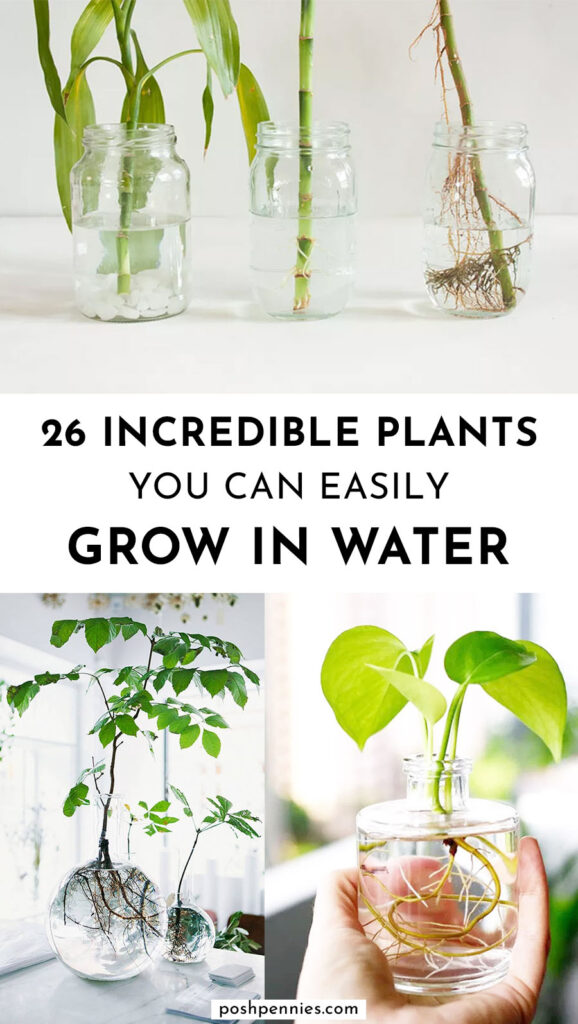
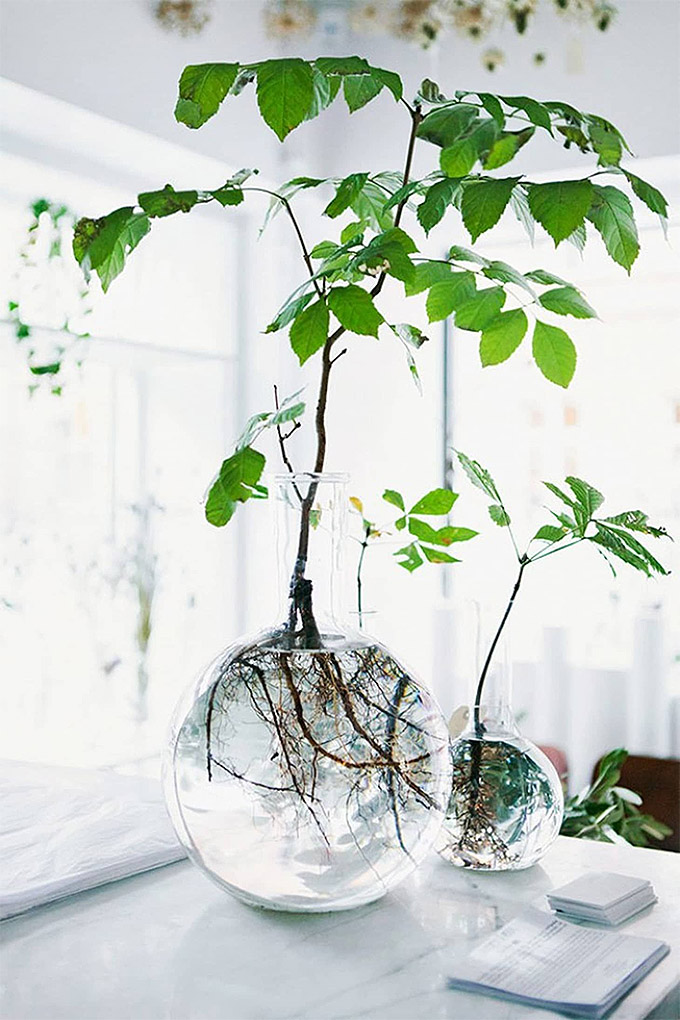

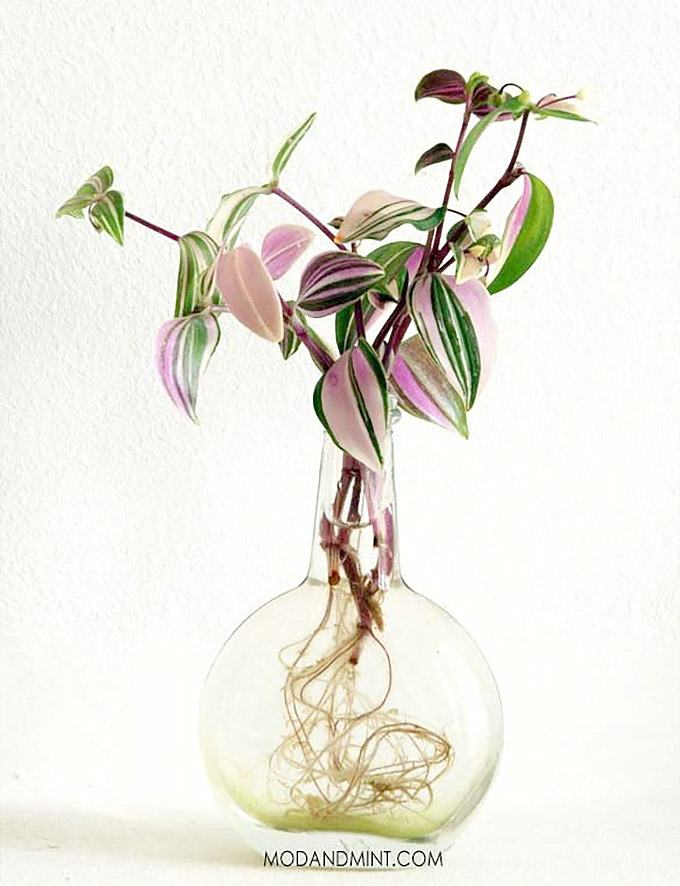
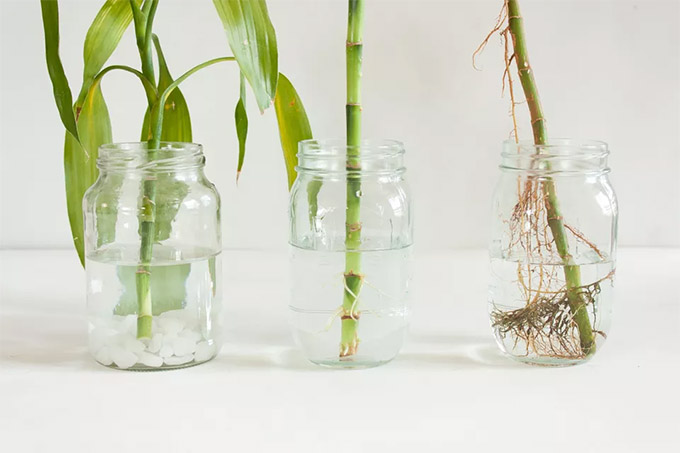

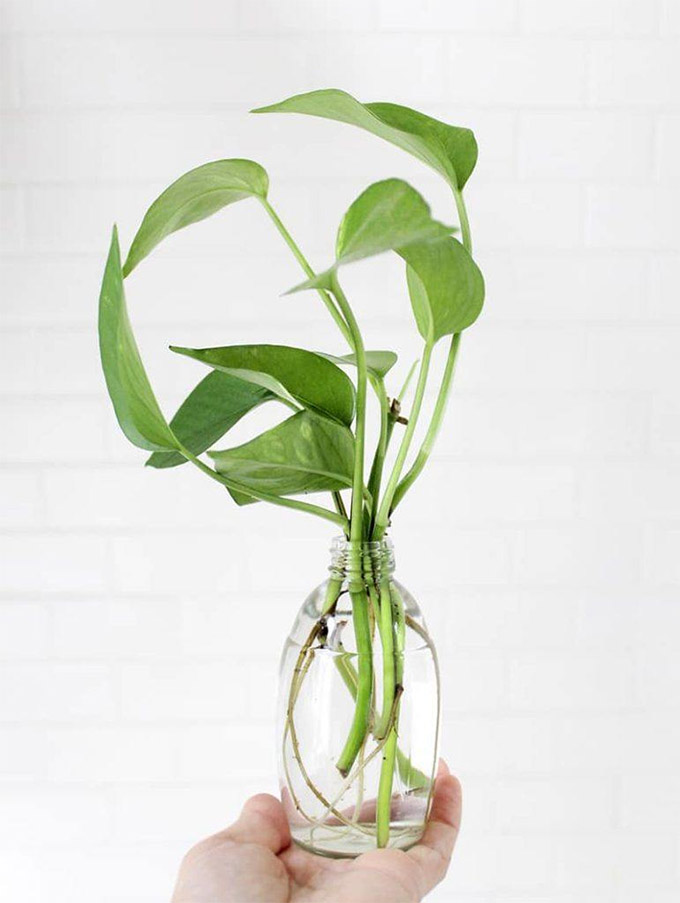




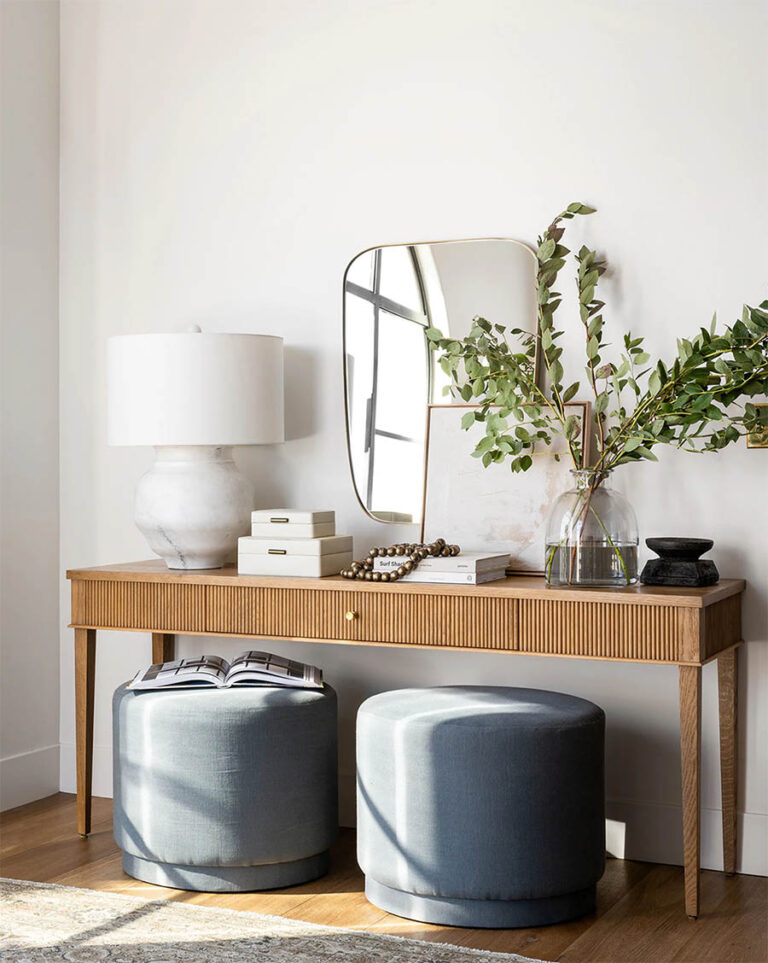


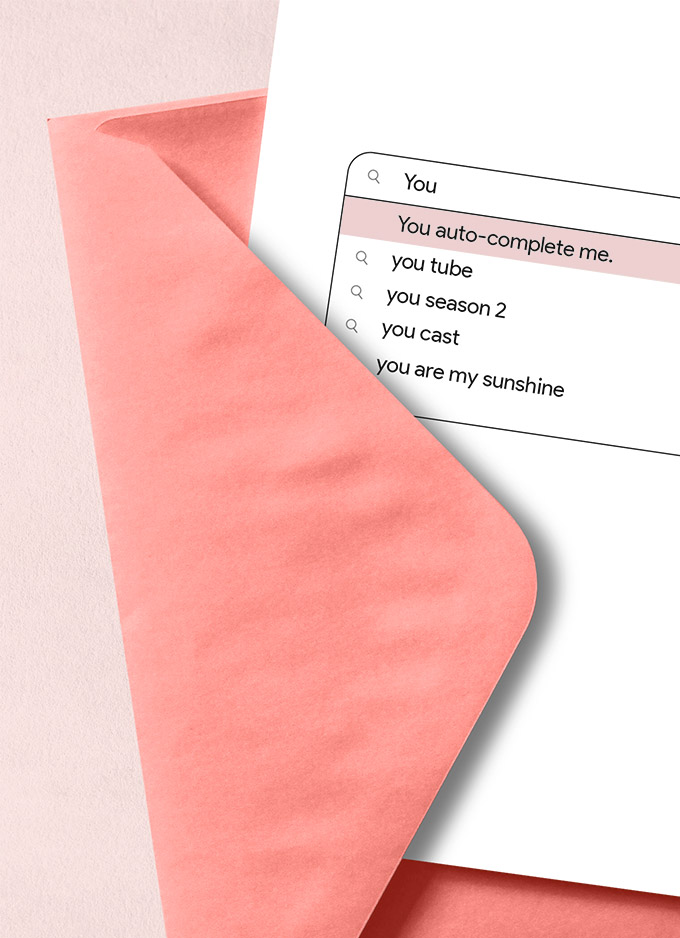

thank you for enlightenment of things that grow in just water. thank you very much
Very informative
I have a jade plant that I’m wondering if I clean all the soil off the (plant), can I just put it in a vase of water & it won’t be a problem from switching to water instead of soil which it has been growing in for months. ??
Also I really enjoyed your posts, very informative.
Thank you for your posts!!
Roni
Thank you
Thank you, I want to stick something in my fishtank so it grows out of it, roots in water.
I don’t think that what you are proposing is a good idea. Particularly transferring a healthy plant from soil to water should not be recommended. There are multiple processes and exchanges that take place in soil (e.g. with mycorrhizae) that are key to plant health. There are millions of years in plant evolution and adaptation that cannot be ignored simply because water seems less ‘messy’ than soil. Just asking people to think twice.
Very informative. I love growing plants in water. Some of the plants I didn’t know you could that.
Thank You
Thank you for the informative post. Much appreciated
Very good